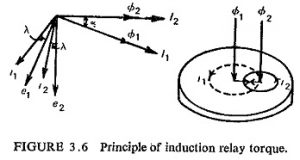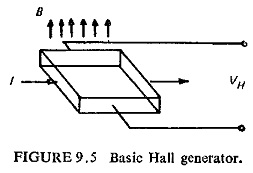Generator Faults:
Generator faults can be considered under the following heads.
(a) Stator Faults:
These include the following:
- Phase-to-earth faults.
- Phase-to-phase faults.
- Inter-turn faults.
Most faults occur in the stator windings and their connections and majority of these are earth faults. Phase faults and inter-turn faults an less common, these usually develop into an earth fault. The effect of earth faults in the stator is twofold:
- Arcing to core, which welds lamination together, causing eddy current hot spots on subsequent use. Repairs to this condition involve considerable expenditure of time and money.
- Severe heating in the conductors damaging them and the insulation, with possible fire risks.
(b) Rotor Faults:
Faults in the rotor circuit may be either earth faults or between turns, which result from severe mechanical and thermal stresses acting on the winding insulation. Modern practice is to operate a generator with its field winding isolated from earth and therefore a single fault between field winding and rotor body due to insulation breakdown can be tolerated. It is important, however, to know the existence of such a fault so that the generator may be taken out of service at leisure, since the incidence of a second fault will short circuit some part of the field winding, resulting in asymmetry of the air-gap fluxes. This can cause severe vibration of the rotor with possible damage to the bearings.
Rotor open circuits though rare can cause arcing and thus result in serious conditions.
(c) Abnormal Running Conditions:
The abnormal running conditions which are likely to occur in a generator are: (i) loss of excitation, (ii) unbalanced loading, (iii) overloading, (iv) failure of prime mover, (v) over-speeding, and (vi) over-voltage.
Field failure may occur due to a faulty field breaker or failure of the exciter. When a generator loses its field excitation it speeds up slightly and acts as an induction generator deriving excitation from the system and supplying power at a leading power factor. A fall in voltage will also occur owing to loss of excitation which may result in loss of synchronism and system instability. There is also the possibility of overheating of the rotor due to induced currents in the rotor and damper windings.
Unbalance may occur due to single phase faults, unbalanced loading, open circuits due to broken lines, or due to the failure of one pole of a circuit breaker to close. Although short circuits will normally be cleared by circuit protection, uncleared faults and cases of unbalanced loading arising from one of the foregoing, occasionally cause the unbalanced current condition to be maintained on the generator.
The unbalance gives rise to negative sequence currents which produce an armature reaction field which rotates in a direction opposite to that of the rotor and hence produces a flux which sweeps through the rotor with twice the rotational speed. Hence spurious currents of twice the machine frequency are induced in the rotor body, in the field windings and the damper windings. These currents cause overheating if the degree of unbalance is appreciable. The amount of negative sequence current which can be carried by a generator is usually well below its rated current.
In the event of generator being overloaded it will overheat the stator which can further damage the insulation and thus complicate matters.
Failure of prime mover may cause the generator to ‘motor’ by taking power from the system in case it is not a single generator system. The seriousness of this condition depends on the type of drive used for the generator.
A sudden loss of load may cause the machine to overspeed which is more likely to occur with hydraulic generators because the water flow cannot be stopped quickly for reasons of energy and mechanical and hydraulic inertia.
Overvoltages are likely to occur due to overspeeding or due to defective voltage regulator.






